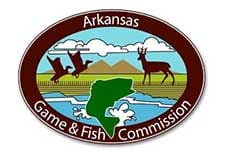

LITTLE ROCK –-(Ammoland.com)- The Arkansas Game and Fish Commission’s latest aerial waterfowl survey revealed a much improved population estimate for ducks wintering in The Natural State.
AGFC biologists took to the skies Dec. 2 in the Arkansas River Valley, Dec. 4-7 in the Delta and Dec. 8 in southwestern Arkansas. The Delta population estimate of 750,174 total ducks, including 445,364 mallards, represents a significant increase from the November aerial survey estimate of about 270,000 total ducks and a paltry mallard estimate of less than 83,000. The mallard estimate is slightly higher than the December 2015 estimate of roughly 347,000. Still, the total duck and mallard estimates remain well below 2009-2016 long-term averages (AGFC began flying standardized-transect aerial surveys in 2009, allowing valid comparisons of populations estimates between years). The December survey long-term average for total ducks in the Delta is about 1.3 million, and the long-term December mallard average is about 700,000.
Biologists counted an estimated 21,278 total ducks, including 12,364 mallards, in the Arkansas River Valley survey area, and 39,360 total ducks, including 34,946 mallards, in the southwestern Arkansas survey area.
In the Delta, observers saw the highest concentrations of mallards in the Bayou Meto-lower Arkansas River and Cache-lower White River survey zones. They noted a few hot spots in the northern Delta, including east of Lake Ashbaugh, south of Amagon along the Cache River and Big Lake National Wildlife Refuge. The East Dardanelle zone held the vast majority of ducks in the river valley survey area, while the Red River corridor, especially from Highway 182 to Sulphur River, held most of the ducks in southwestern Arkansas.
More than 70 percent of mallards in the Delta were seen on rice fields and other agricultural habitat, likely the result of newly available sheet water in agricultural fields following rainfall associated with passing cold fronts.
Although habitat conditions have improved with recent rainfall, major rivers and their tributaries had increased flows but not enough to provide extensive flooding of adjacent habitat. Much of the rain served to saturate dry soils but didn’t lead to extensive runoff. But soils are now saturated and future rain could provide the runoff and flooding to increase habitat availability on a large scale and attract large numbers of migrating ducks.
Missouri waterfowl surveys indicate many ducks remain north of Arkansas. Recent surveys conducted on Missouri wetlands managed for public waterfowl hunting show Missouri’s highest population estimates of the season, and mallards comprise a high percentage of the overall population estimate.
The forecast for an extended period of cold weather bodes well for Arkansas hunters and a possible continued migration of mallards and other species in coming weeks. After cold temperatures this week and a brief warm-up Saturday, the coldest air of the season is expected to plunge southward into the Mississippi Valley on Sunday, dropping temperatures into the teens across central Arkansas early next week. That could help maintain migration of mallards and other species into Arkansas in the coming weeks.
